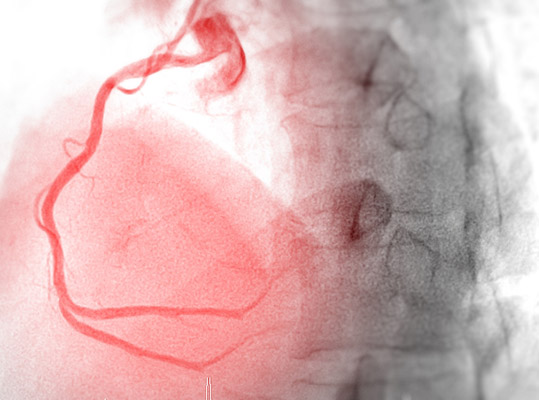What a Peripheral Arterial Disease Means for You

Peripheral arterial disease can cause uncomfortable symptoms in the legs and, sometimes, the arms. Fortunately, a cardiologist can detect this condition early and provide personalized care to minimize the day-to-day impact. While being diagnosed with peripheral arterial disease may sound concerning, understanding exactly what it means and how to manage its symptoms can lead to better vascular health and a higher quality of life.
Peripheral arterial disease: Symptoms and causes
Peripheral arterial disease (PAD) occurs when arteries that supply blood to the limbs become narrowed or blocked, typically due to the accumulation of fatty deposits. This restriction limits the amount of oxygen-rich blood reaching the muscles. Common symptoms include:
- Leg pain when walking
- Weak or numb legs
- Cramping in the legs or arms
- Cold feet or lower legs
- Weak pulse in the feet or legs
Cold or discolored skin, shiny skin, and slow-healing wounds or ulcers (particularly on the toes) may also indicate PAD. To be on the safe side, consult a cardiologist — especially if the patient has risk factors for this condition. These include, but are not limited to, high cholesterol, smoking, diabetes, and hypertension.
How a cardiologist diagnoses peripheral arterial disease
A cardiologist has the necessary experience and training to treat peripheral arterial disease. They will begin with a thorough review of symptoms, medical history, and risk factors, taking into account pre-existing conditions, lifestyle, and any genetic predisposition to arterial disease. This initial evaluation helps identify those at a higher risk and informs decisions about screening and next steps.
One of the most common tests is the ankle-brachial index (ABI), a non-invasive procedure that compares blood pressure in the ankle and arm. A lower blood pressure in the ankle may signal reduced blood flow to the limbs and, therefore, arterial narrowing. If further evaluation is necessary, advanced imaging such as Doppler ultrasound, magnetic resonance angiography (MRA), or computed tomography angiography (CTA) may be recommended. This process can help obtain a clearer picture of the arteries and locate any blockages.
Peripheral arterial disease treatments
Early-stage peripheral arterial disease is often managed with lifestyle adjustments. Quitting smoking, managing blood sugar levels, improving nutrition, and incorporating moderate exercise may help restore vascular health and slow or prevent disease progression. A cardiologist helps design a plan that supports these goals and monitors ongoing improvement.
In some cases, a provider may prescribe medications to help manage high blood pressure, high cholesterol, or other contributing conditions. For instance, blood thinners or antiplatelet agents can reduce the risk of blood clots and improve circulation.
When conservative measures do not provide relief, procedures such as angioplasty or stenting may be necessary. These minimally invasive techniques help reopen narrowed arteries and restore blood flow. In severe cases, bypass surgery may be considered to reroute blood flow around blocked areas.
The role of ongoing support
Ongoing follow-up with a cardiologist helps ensure that peripheral arterial disease treatment stays effective and responsive to the patient’s needs. As symptoms or risk factors change, the cardiologist can adjust the treatment plan accordingly. This continuity of care is particularly important for patients with coexisting heart conditions, since PAD often signals more widespread cardiovascular involvement. Regular evaluations support early detection of new risks, guide medication adjustments, and help prevent serious complications.
Get care for PAD
Living with peripheral arterial disease becomes more manageable when supported by a cardiologist. Addressing PAD not only improves limb circulation but also contributes to heart health and overall wellness. For diagnosis or treatment, schedule an appointment at our Delray Beach office today.
Request an appointment here: https://floridapremiercardio.com or call Florida Premier Cardiology at (561) 325-6495 for an appointment in our Delray Beach office.
Check out what others are saying about our services on Yelp: Read our Yelp reviews.
Recent Posts
Cardiac catheterization supports precise diagnosis when symptoms suggest coronary artery disease, valve problems, or heart failure. This minimally invasive procedure offers real-time measurements, imaging, and targeted testing to shape individualized care. It enables cardiology teams to map blood flow, confirm a diagnosis, and plan interventions in a single session.A cardiologist threads a slender catheter through…
Visiting your heart doctor for regular checkups can help keep the most important organ in your body in top shape. Research shows that the heart is the engine that keeps the body going. It pumps oxygenated blood to every part of your body. That is why having a cardiologist in your life is necessary, especially…
The heart is one of the most important organs in the body, and it is crucial to prioritize its health. A cardiovascular doctor can help prevent, diagnose, and treat diseases that affect the heart. While patients are typically referred to these specialists by their primary care doctors, there are times when patients should seek the…
Leg spider vein treatment is a popular solution for those wanting to address unsightly or uncomfortable veins on the legs. These small, web-like clusters of veins are often red, blue, or purple and are typically harmless but can cause cosmetic concerns or discomfort. Leg spider vein treatment from a cardiologist can help reduce or eliminate…


